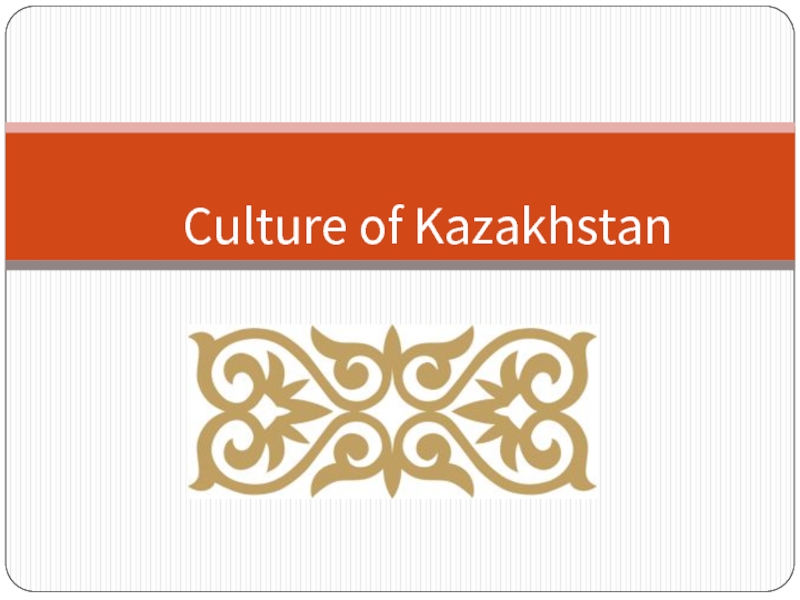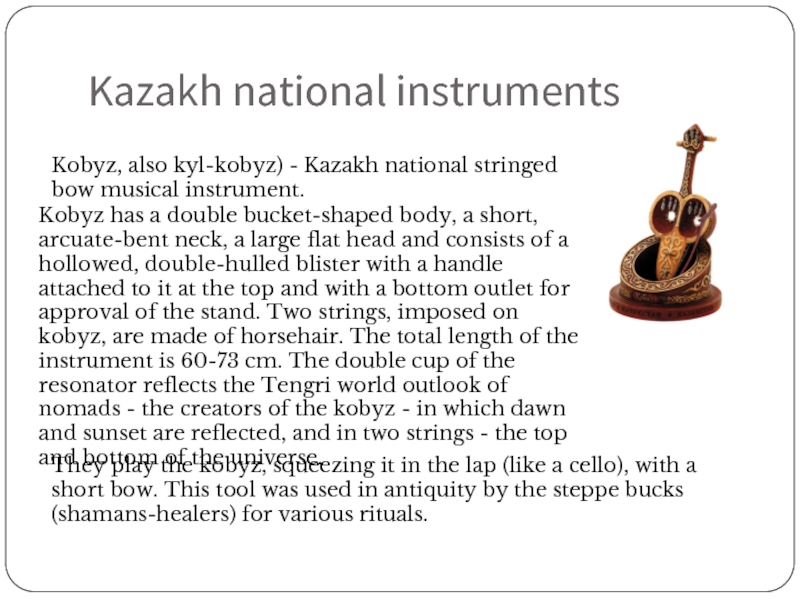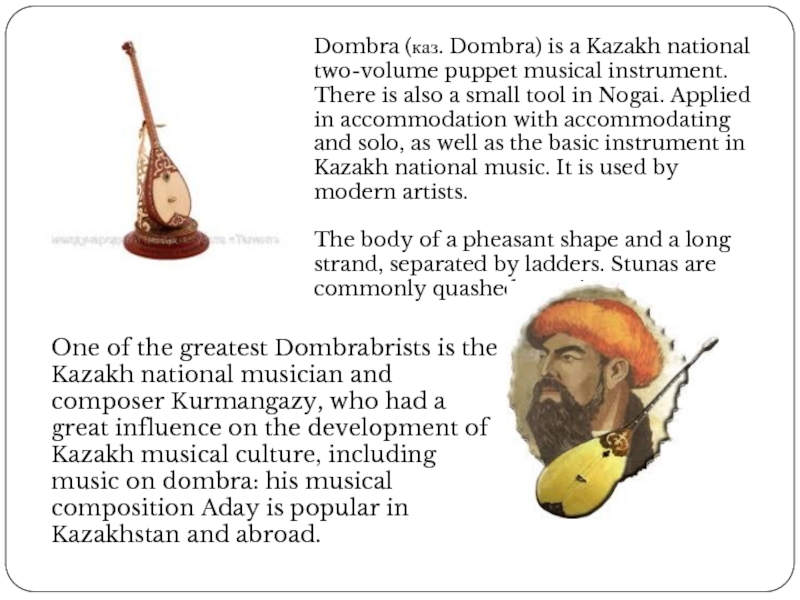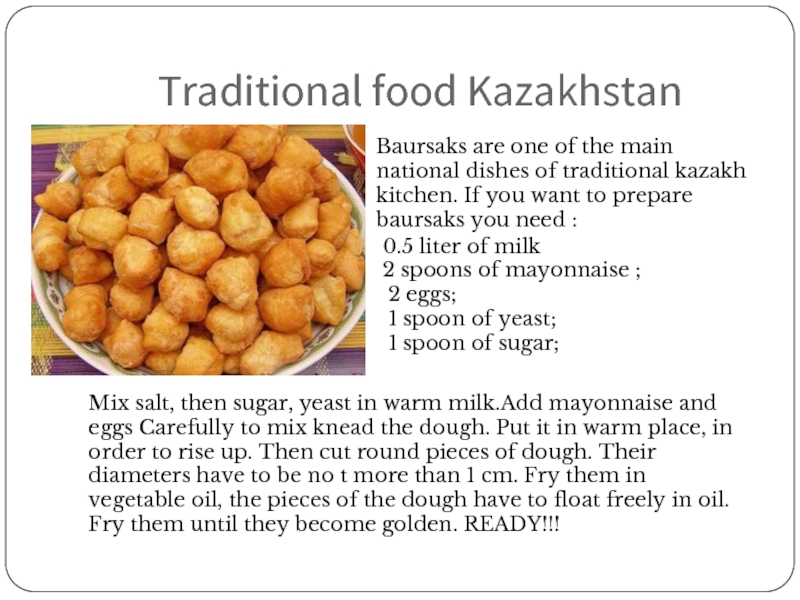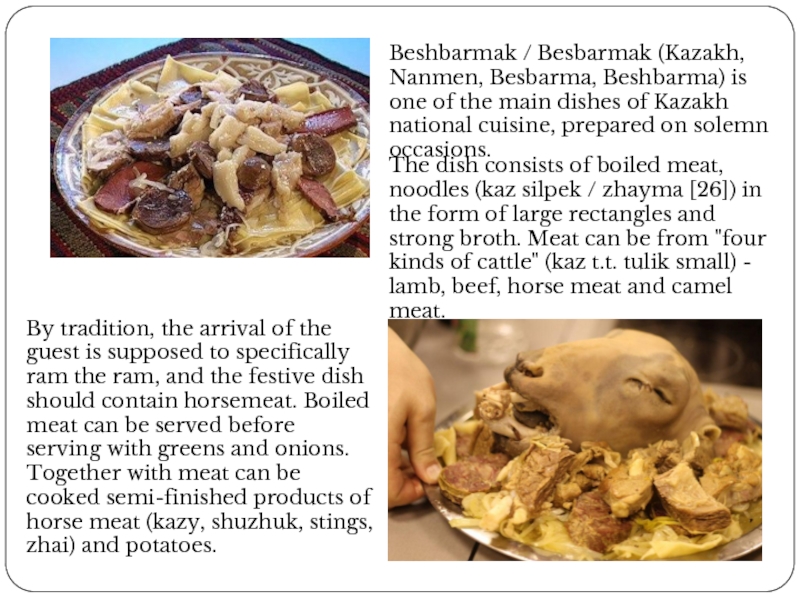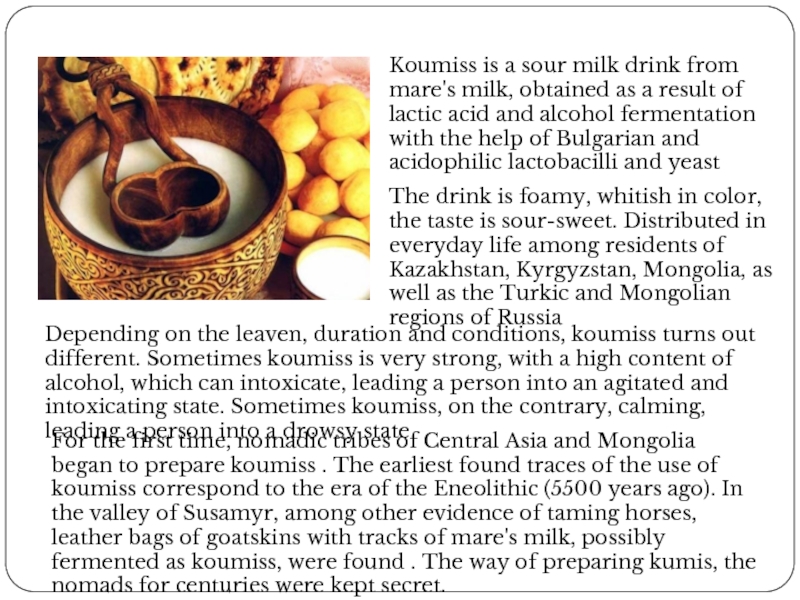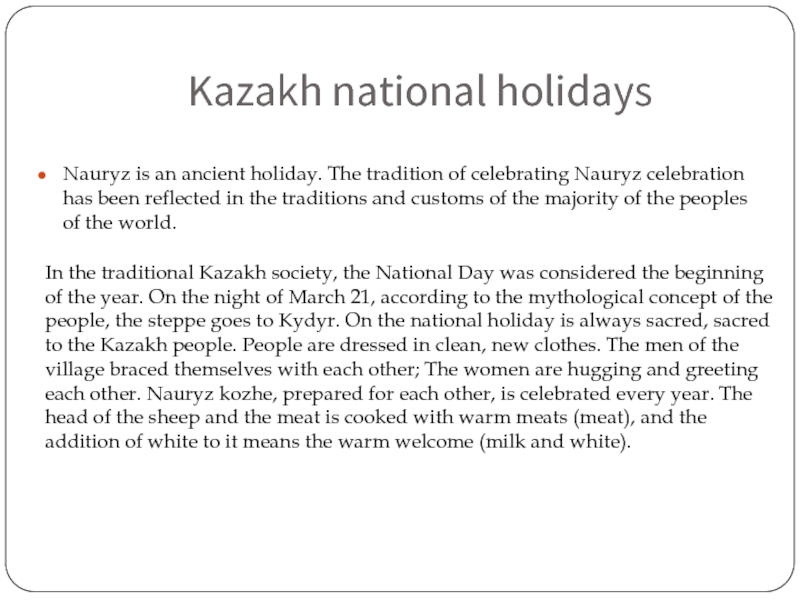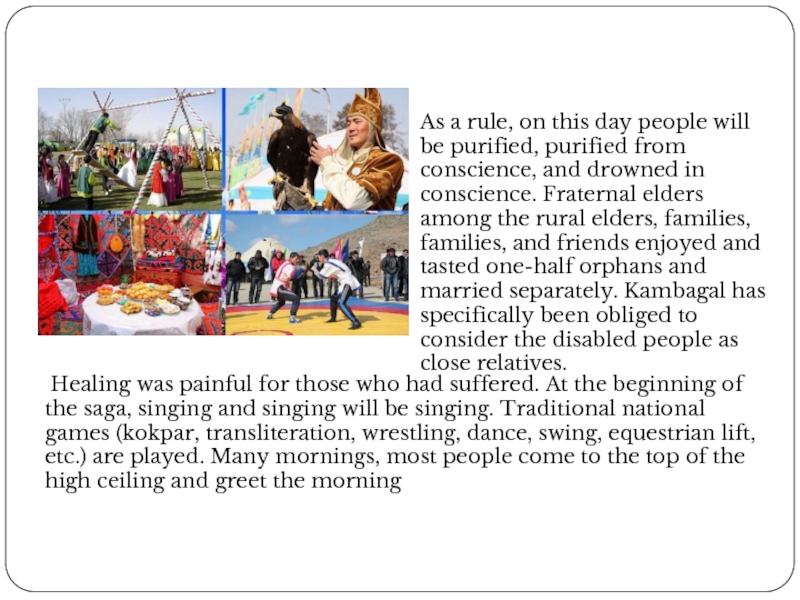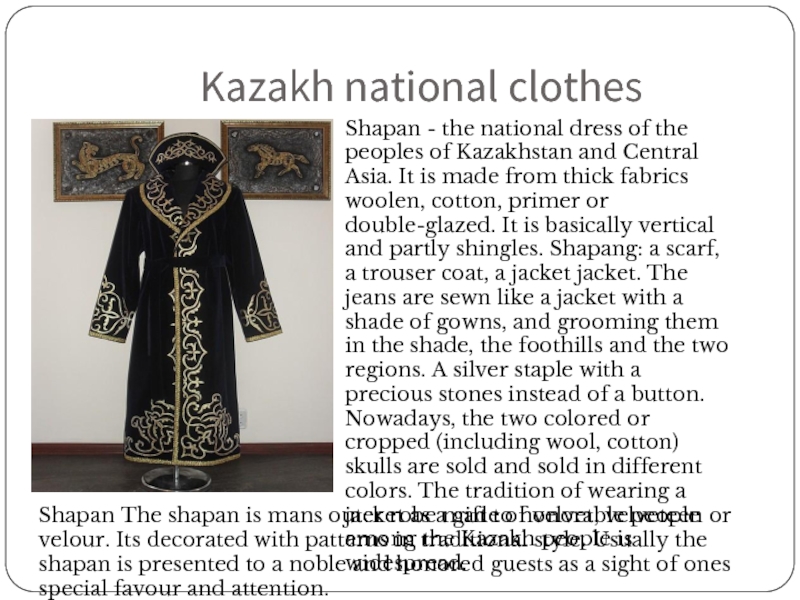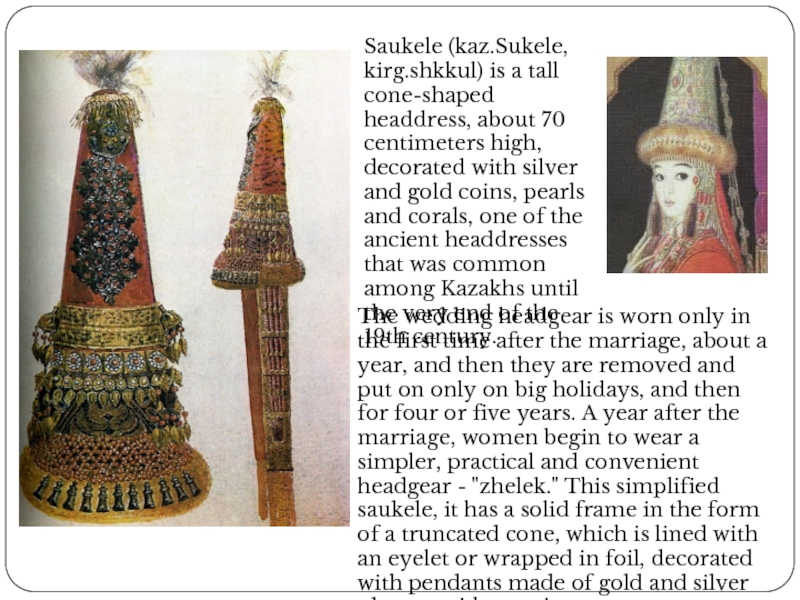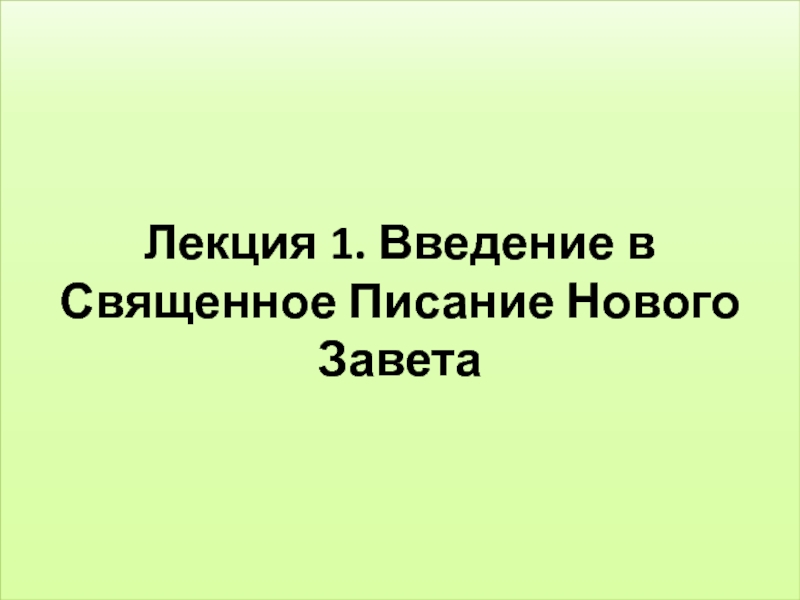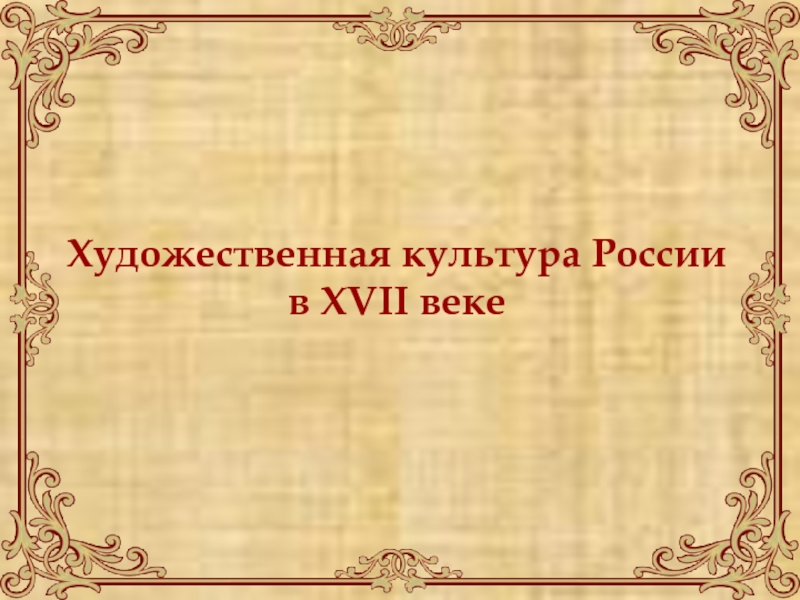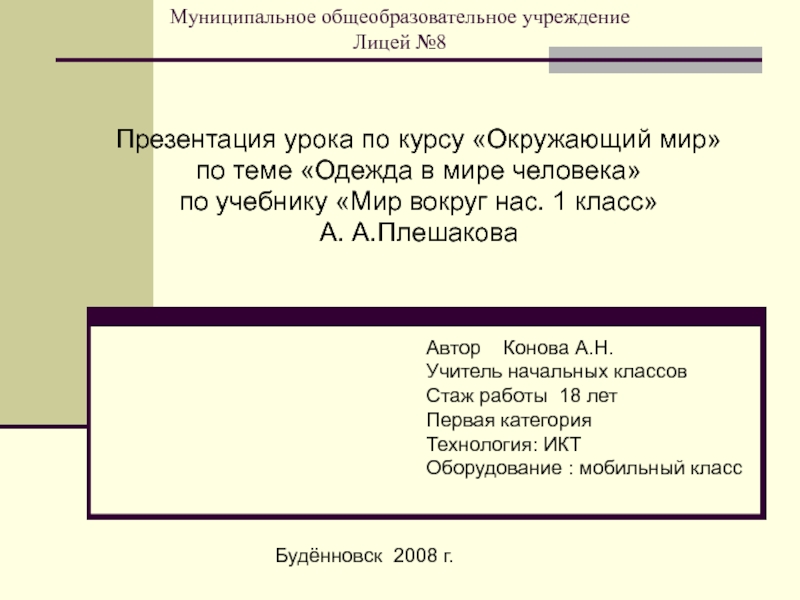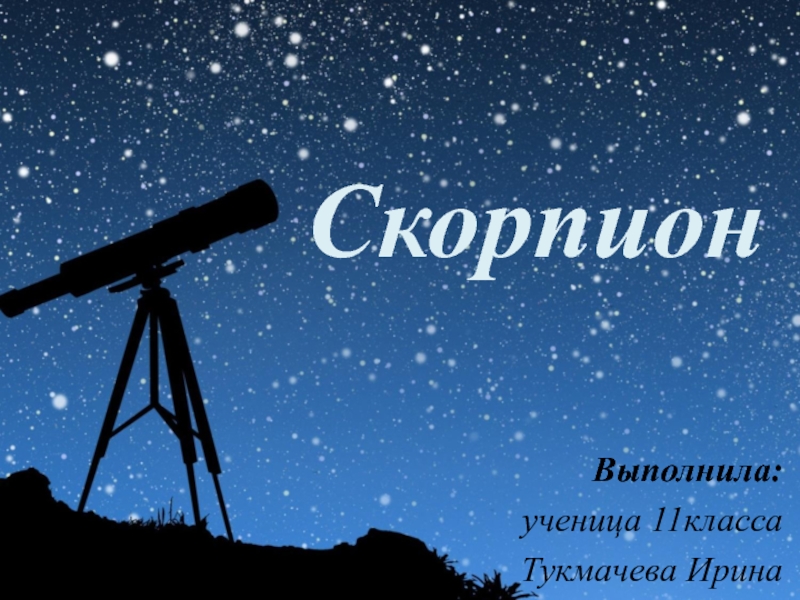- Главная
- Разное
- Дизайн
- Бизнес и предпринимательство
- Аналитика
- Образование
- Развлечения
- Красота и здоровье
- Финансы
- Государство
- Путешествия
- Спорт
- Недвижимость
- Армия
- Графика
- Культурология
- Еда и кулинария
- Лингвистика
- Английский язык
- Астрономия
- Алгебра
- Биология
- География
- Детские презентации
- Информатика
- История
- Литература
- Маркетинг
- Математика
- Медицина
- Менеджмент
- Музыка
- МХК
- Немецкий язык
- ОБЖ
- Обществознание
- Окружающий мир
- Педагогика
- Русский язык
- Технология
- Физика
- Философия
- Химия
- Шаблоны, картинки для презентаций
- Экология
- Экономика
- Юриспруденция
Culture of Kazakhstan презентация
Содержание
- 1. Culture of Kazakhstan
- 2. Kazakh national instruments Kobyz, also kyl-kobyz) -
- 3. Dombra (каз. Dombra) is a Kazakh national
- 5. Traditional food Kazakhstan Baursaks are one of
- 6. Beshbarmak / Besbarmak (Kazakh, Nanmen, Besbarma, Beshbarma)
- 7. Koumiss is a sour milk drink from
- 8. Kazakh national holidays Nauryz is an
- 9. As a rule, on this day people
- 10. Kazakh national clothes Shapan The shapan
- 11. Saukele (kaz.Sukele, kirg.shkkul) is a tall cone-shaped
- 12. Thank you for watching
Слайд 2Kazakh national instruments
Kobyz, also kyl-kobyz) - Kazakh national stringed bow musical
Kobyz has a double bucket-shaped body, a short, arcuate-bent neck, a large flat head and consists of a hollowed, double-hulled blister with a handle attached to it at the top and with a bottom outlet for approval of the stand. Two strings, imposed on kobyz, are made of horsehair. The total length of the instrument is 60-73 cm. The double cup of the resonator reflects the Tengri world outlook of nomads - the creators of the kobyz - in which dawn and sunset are reflected, and in two strings - the top and bottom of the universe.
They play the kobyz, squeezing it in the lap (like a cello), with a short bow. This tool was used in antiquity by the steppe bucks (shamans-healers) for various rituals.
Слайд 3Dombra (каз. Dombra) is a Kazakh national two-volume puppet musical instrument.
The body of a pheasant shape and a long strand, separated by ladders. Stunas are commonly quashed or quintet.
One of the greatest Dombrabrists is the Kazakh national musician and composer Kurmangazy, who had a great influence on the development of Kazakh musical culture, including music on dombra: his musical composition Aday is popular in Kazakhstan and abroad.
Слайд 5Traditional food Kazakhstan
Baursaks are one of the main national dishes of
0.5 liter of milk
2 spoons of mayonnaise ;
2 eggs;
1 spoon of yeast;
1 spoon of sugar;
Mix salt, then sugar, yeast in warm milk.Add mayonnaise and eggs Carefully to mix knead the dough. Put it in warm place, in order to rise up. Then cut round pieces of dough. Their diameters have to be no t more than 1 cm. Fry them in vegetable oil, the pieces of the dough have to float freely in oil. Fry them until they become golden. READY!!!
Слайд 6Beshbarmak / Besbarmak (Kazakh, Nanmen, Besbarma, Beshbarma) is one of the
The dish consists of boiled meat, noodles (kaz silpek / zhayma [26]) in the form of large rectangles and strong broth. Meat can be from "four kinds of cattle" (kaz t.t. tulik small) - lamb, beef, horse meat and camel meat.
By tradition, the arrival of the guest is supposed to specifically ram the ram, and the festive dish should contain horsemeat. Boiled meat can be served before serving with greens and onions. Together with meat can be cooked semi-finished products of horse meat (kazy, shuzhuk, stings, zhai) and potatoes.
Слайд 7Koumiss is a sour milk drink from mare's milk, obtained as
The drink is foamy, whitish in color, the taste is sour-sweet. Distributed in everyday life among residents of Kazakhstan, Kyrgyzstan, Mongolia, as well as the Turkic and Mongolian regions of Russia
Depending on the leaven, duration and conditions, koumiss turns out different. Sometimes koumiss is very strong, with a high content of alcohol, which can intoxicate, leading a person into an agitated and intoxicating state. Sometimes koumiss, on the contrary, calming, leading a person into a drowsy state.
For the first time, nomadic tribes of Central Asia and Mongolia began to prepare koumiss . The earliest found traces of the use of koumiss correspond to the era of the Eneolithic (5500 years ago). In the valley of Susamyr, among other evidence of taming horses, leather bags of goatskins with tracks of mare's milk, possibly fermented as koumiss, were found . The way of preparing kumis, the nomads for centuries were kept secret.
Слайд 8Kazakh national holidays
Nauryz is an ancient holiday. The tradition of celebrating
In the traditional Kazakh society, the National Day was considered the beginning of the year. On the night of March 21, according to the mythological concept of the people, the steppe goes to Kydyr. On the national holiday is always sacred, sacred to the Kazakh people. People are dressed in clean, new clothes. The men of the village braced themselves with each other; The women are hugging and greeting each other. Nauryz kozhe, prepared for each other, is celebrated every year. The head of the sheep and the meat is cooked with warm meats (meat), and the addition of white to it means the warm welcome (milk and white).
Слайд 9As a rule, on this day people will be purified, purified
Healing was painful for those who had suffered. At the beginning of the saga, singing and singing will be singing. Traditional national games (kokpar, transliteration, wrestling, dance, swing, equestrian lift, etc.) are played. Many mornings, most people come to the top of the high ceiling and greet the morning
Слайд 10Kazakh national clothes
Shapan The shapan is mans outer robe made
Shapan - the national dress of the peoples of Kazakhstan and Central Asia. It is made from thick fabrics woolen, cotton, primer or double-glazed. It is basically vertical and partly shingles. Shapang: a scarf, a trouser coat, a jacket jacket. The jeans are sewn like a jacket with a shade of gowns, and grooming them in the shade, the foothills and the two regions. A silver staple with a precious stones instead of a button. Nowadays, the two colored or cropped (including wool, cotton) skulls are sold and sold in different colors. The tradition of wearing a jacket as a gift to honorable people among the Kazakh people is widespread.
Слайд 11Saukele (kaz.Sukele, kirg.shkkul) is a tall cone-shaped headdress, about 70 centimeters
The wedding headgear is worn only in the first time after the marriage, about a year, and then they are removed and put on only on big holidays, and then for four or five years. A year after the marriage, women begin to wear a simpler, practical and convenient headgear - "zhelek." This simplified saukele, it has a solid frame in the form of a truncated cone, which is lined with an eyelet or wrapped in foil, decorated with pendants made of gold and silver plaques with gem inserts.
